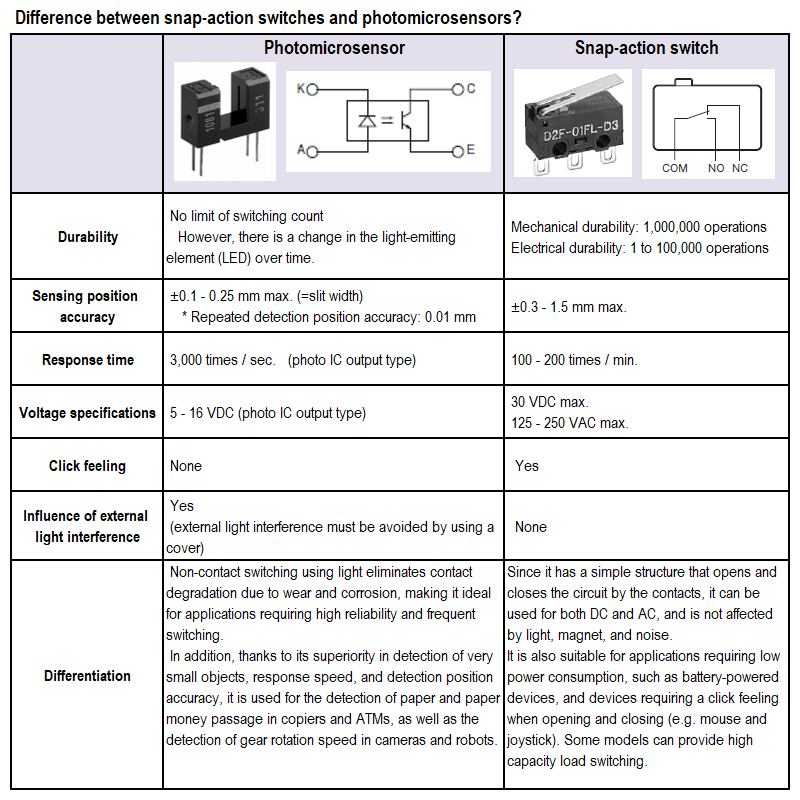How do I properly choose between a basic switch and a sensor?
ID: FAQE20002E
update:
Answer
Basic switches and sensors are both used for detection of an object (workpiece). A basic switch has a simple structure that helps to save energy and directly opens and closes both DC and AC circuit by the contacts. Its snap-action mechanism creates a click feeling that is required for some devices (e.g. computer mouse).
Explanation
The typical applications for basic switches and sensors are described below to help select them for detection purposes.
- Basic switches should be used:
- As limit switches of a facility or equipment (under an environment susceptible to noise, static electrical charge, light, dust, etc.)
- For detection applications with less power consumption
- For applications to cut off (interlock) the main power supply
*Please note that no forced separation mechanism is provided. - To detect an object in contact
- For devices that require a click feeling (e.g. computer mouse, joystick)
- Sensors should be used:
- To detect an object (workpiece) while not coming into contact with it
- To avoid constraints of basic switches such as electrical and mechanical life (in applications with very frequent or very infrequent detection usage)
- For applications requiring high-speed response (e.g. high-speed rotating gear detection)
- For applications requiring accurate positioning
Quick tips
The following table shows the differences between Photomicrosensors and basic switches as a reference to select a suitable product for your application. Note that the contents of the table are not necessarily shared by every model. Refer to the product’s datasheet for detail specifications.

| Product category | Switches Basic Switches |
|---|---|
| Classification | Selection, Characteristics |
| Related keywords |
|
Related Questions
-
Q
Does Omron have a small high-capacity snap-action switch?
- A
Omron’s basic switch D2F is small sized and can be used for high-capacity switching.
-
Q
How do I choose between a Photomicrosensors(photointerrupter) and a basic switch (the difference in usage)?
- A
A basic switch is made of open and closed contacts whereas a Photomicrosensors(photointerrupter) is non-contact switching using an optical beam. A basic switch is available for AC and DC supplies.
Since a basic switch does not emit LED, it is ideally suited for applications that require low current consumption such as battery-powered equipment. A Photomicrosensors is superior in durability, sensing position accuracy and response speed.
-
Q
Is there a switch without chattering that turns ON when pressed?
- A
Basic switches cannot completely eliminate chattering due to their structure.